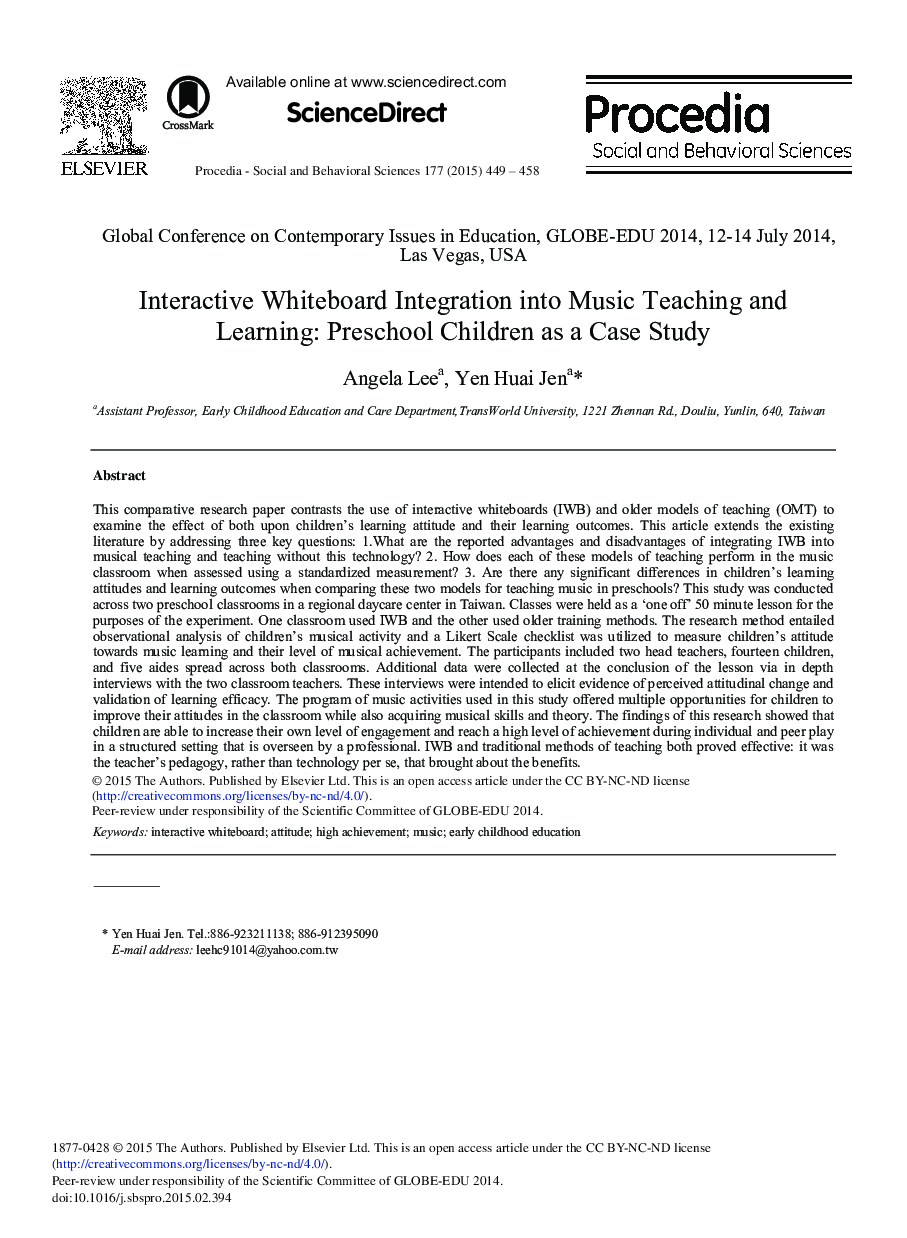| Article ID | Journal | Published Year | Pages | File Type |
|---|---|---|---|---|
| 1110701 | Procedia - Social and Behavioral Sciences | 2015 | 10 Pages |
This comparative research paper contrasts the use of interactive whiteboards (IWB) and older models of teaching (OMT) to examine the effect of both upon children's learning attitude and their learning outcomes. This article extends the existing literature by addressing three key questions: 1.What are the reported advantages and disadvantages of integrating IWB into musical teaching and teaching without this technology? 2. How does each of these models of teaching perform in the music classroom when assessed using a standardized measurement? 3. Are there any significant differences in children's learning attitudes and learning outcomes when comparing these two models for teaching music in preschools? This study was conducted across two preschool classrooms in a regional daycare center in Taiwan. Classes were held as a ‘one off’ 50 minute lesson for the purposes of the experiment. One classroom used IWB and the other used older training methods. The research method entailed observational analysis of children's musical activity and a Likert Scale checklist was utilized to measure children's attitude towards music learning and their level of musical achievement. The participants included two head teachers, fourteen children, and five aides spread across both classrooms. Additional data were collected at the conclusion of the lesson via in depth interviews with the two classroom teachers. These interviews were intended to elicit evidence of perceived attitudinal change and validation of learning efficacy. The program of music activities used in this study offered multiple opportunities for children to improve their attitudes in the classroom while also acquiring musical skills and theory. The findings of this research showed that children are able to increase their own level of engagement and reach a high level of achievement during individual and peer play in a structured setting that is overseen by a professional. IWB and traditional methods of teaching both proved effective: it was the teacher's pedagogy, rather than technology per se, that brought about the benefits.
